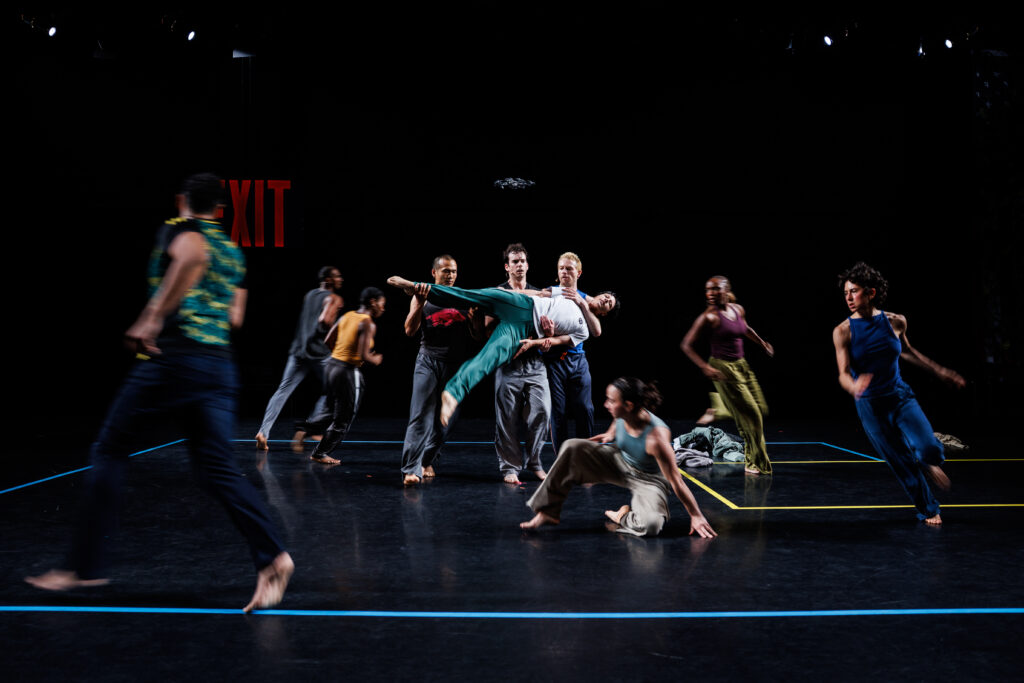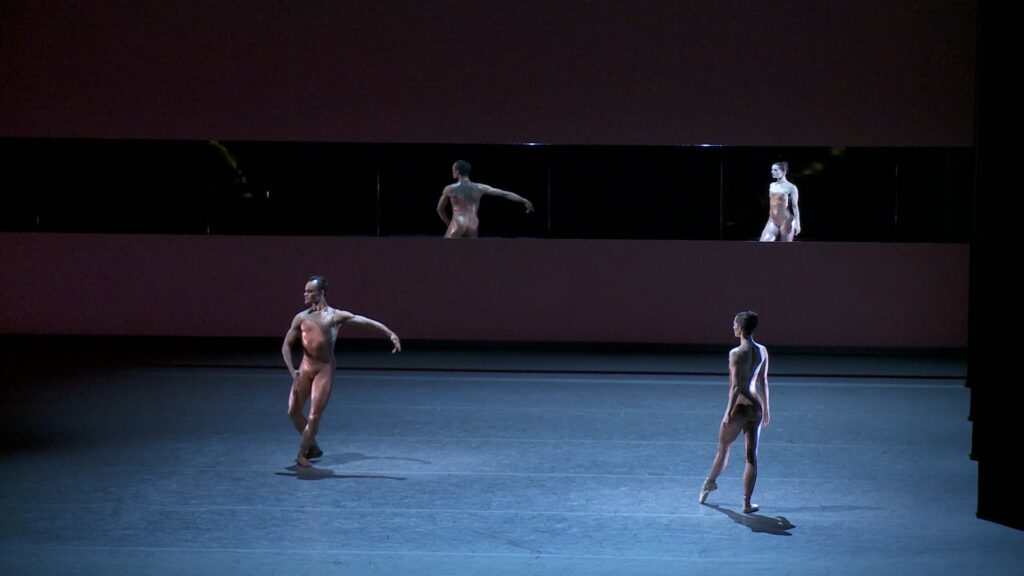VIEWPOINTS – Dance roundup: Bill T. Jones’s CURRICULUM III: PEOPLE, PLACES & THINGS and Kyle Abraham’s WHEN WE FELL for City Ballet
- By drediman
- May 26, 2025
- No Comments
In the world of dance, two of this past week’s highlights included the latest Bill T. Jones dance theater piece, as well as the live in-person version of a streamed pandemic era ballet by Kyle Abraham. As always, read on for my thoughts.

BILL T. JONES/ARNIE ZANES COMPANY
New York Live Arts
This spring at his Chelsea home base (a.k.a. New York Live Arts), revered choreographer Bill T. Jones unveiled his latest creation Curriculum III: People, Places & Things (RECOMMENDED). The piece is another example of Jones’ penchant for folding documentary and multimedia elements into gestural choreographic chapters, which together amount to a distinctive brand of dance theater. In essence, the choreographer’s latest work questions what it means to be an American today, particularly in the face of an administration that seems keen on erasing diversity amongst its citizens. Over the course of the performance, each of the ten members of the company are interrogated about their family lineage in this country (all but one of the company members are American citizens; strikingly, his is the final segment of the show). Unsurprisingly, some monologues are more captivating than others — both choreographically, as well as in terms of the comfort level of some of the dancers as actors — but all of them, with the one aforementioned exception, end with the statement “I am an American”. In between each profile, the dancers melt back into the ensemble, exuding an escalating sense of anxiety as they march forward together into uncharted territory as a people, pursued by an unseen menacing threat (the piece begins with a hovering drone monitoring the dancers’ huddled, shadowy bodies below it). It all amounts to a compelling quilt work — thanks to some fascinatingly idiosyncratic performances — that paints a rich tapestry of a people whose sense of belonging and identity is on tenuously thin ice.

NEW YORK CITY BALLET
David Geffen Hall
As New York City Ballet approaches the conclusion of its spring season, I was eager to catch one program in particular. That would be the “Eclectic NYCB” bill (HIGHLY RECOMMENDED), which included the stage premiere of Kyle Abraham’s When We Fell, as well as the chance to catch a=the rare return of Lynne Taylor-Corbett’s Chiaroscuro. One of the most sought after and versatile choreographers working today, Abraham originally created the former piece for film — shot in the Koch’s piazza-like promenade — and it turned out to be one of the most memorable pieces of art to emerge from the pandemic. Set to a score for three strategically-placed pianos by Morton Feldman, Jason Moran, and Nico Muhly, the ballet represents a refreshing departure for the choreographer, depicting bodies floating on and off the stage, as if displaced ghosts intersecting with our plane of existence. An exercise in stillness and listless detachment, the piece contemplatively basks in otherworldly solitude, drawing viewers in with its calm phrasing and statuesque extensions. Thankfully, even without the guiding hand of cinematography, the piece translates beautifully to the stage, its fragile and hypnotic qualities undiminished. In terms of viewing the piece, I suggest sitting in a more central location to get the most out of the work’s subtle sonic and visual nuances (e.g., the design is dominated by a horizontal mirror, which can be optimally appreciated from certain vantage points). Although conventional by comparison, Taylor-Corbett’s dynamic Chiaroscuro was nevertheless a moving homage to both the the choreographer — who recently sadly passed away — and principal Andrew Veyette, who hand-picked the piece to retire to. These works were bookended by superb performances of two eclectic works in the repertoire, George Balanchine’s sublime Divertimento from ‘Le Baiser de la Fée and Alexei Ratmasky’s raucous Odesa.

 Copyright © 2025
Copyright © 2025
Leave a Reply